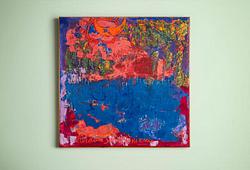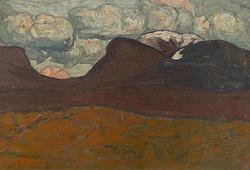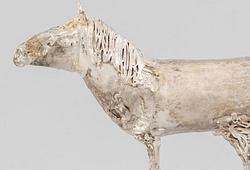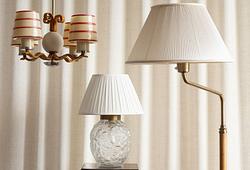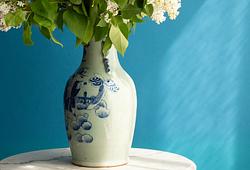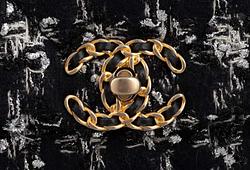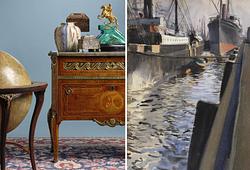A green ground famille rose hat stand, Qing dynasty, 19th century.
The uppermost globular section is decorated with four reticulated chilong medallions, reserved against an apple green ground decorated with scrolling lotus bats and shou characters, all resting on a support decorated with iron-red upright petals. The mid-section of the stand is divided by four vertical flanges above a bell-form base decorated with lotus scrolls separated by four pierced spandrels. The circular base is decorated with lotus scrolls on a pink ground with a scalloped faux-bois apron and base. Höjd 27 cm.
Small part at the top missing. Chip. Repair.
Alkuperä - Provenienssi
A Swedish private collector.
Näyttelyt
Compare a similar sold at Christies, lot 278, 7 Nov 2017 Live auction 13982,
Fine Chinese Ceramics & Works of Art.
Compare a similar turquoise-ground hat stand dated to the Qianlong-Jiaqing period (1736-1820) sold at Christie's London, 11 May 2010, lot 261, and a yellow-ground 'nine dragons' hat stand dated to the Daoguang period (1821-1850) sold at Christie's London, 8 November 2016, lot 80.
Muut tiedot
Hat stands for the Imperial Court were made in a variety of mediums, from jade to zitan, to lacquer and porcelain. Porcelain was a perfect medium, allowing the potter to craft the vessel to perfectly suit its purpose. As may be seen in the present lot, the uppermost spherical section was used as a vessel for perfumed contents, such as fragrant flowers or incense, to pleasantly scent the hat and surroundings through the four reticulated 'bat' medallions. The cover was cleverly made with a mechanism to lock it to the globular section.
The Qing Court Collection, in the the Palace Museum, Taipei, includes seven similarly modelled famille rose hat stands.





